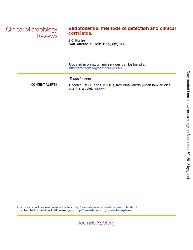Please use this identifier to cite or link to this item:
http://hdl.handle.net/11054/12Full metadata record
| DC Field | Value | Language |
|---|---|---|
| dc.contributor.author | Hurley, James C. | en |
| dc.date.accessioned | 2012-09-04T04:55:33Z | en |
| dc.date.available | 2012-09-04T04:55:33Z | en |
| dc.date.issued | 1995 | en |
| dc.identifier.govdoc | 00002 | en |
| dc.identifier.uri | http://hdl.handle.net/11054/12 | en |
| dc.description.abstract | As an assay for endotoxin, the Limulus amebocyte lysate assay has several desirable properties: sensitivity, specificity, and potential for adaptation to a quantitative format. Several modifications have been developed to enhance its potential for clinical application. The modifications that allow quantitative measurement of endotoxin and also improve its application to blood samples are described in this review. In fluids other than blood, the detection of endotoxin with the Limulus amebocyte lysate assay can be used as an aid to identify the presence of gram-negative bacteria, and the assay has established utility. With blood, however, there are a range of factors that interfere with the detection of endotoxemia and there are disparate views with respect to the diagnostic and prognostic significance of the test results. In general, the clinical significance of the finding of endotoxemia broadly parallels the frequency and importance of gram-negative sepsis in the patient groups studied and a decline in endotoxin levels accompanies clinical improvement. However, with therapies designed to reduce levels of endotoxin, or to antagonize its effects, it is unclear whether clinical improvement occurs as a consequence of changes in the levels of endotoxemia. | en |
| dc.description.provenance | Submitted by Kimberley Asprey (kimberleya@bhs.org.au) on 2012-09-04T04:35:12ZNo. of bitstreams: 1Endotoxin methods of detection and clinical correlates.pdf: 459124 bytes, checksum: 72988541ef47bd0015b2da91f042a1dc (MD5) | en |
| dc.description.provenance | Approved for entry into archive by Kimberley Asprey (kimberleya@bhs.org.au) on 2012-09-04T04:55:33Z (GMT) No. of bitstreams: 1Endotoxin methods of detection and clinical correlates.pdf: 459124 bytes, checksum: 72988541ef47bd0015b2da91f042a1dc (MD5) | en |
| dc.description.provenance | Made available in DSpace on 2012-09-04T04:55:33Z (GMT). No. of bitstreams: 1Endotoxin methods of detection and clinical correlates.pdf: 459124 bytes, checksum: 72988541ef47bd0015b2da91f042a1dc (MD5) Previous issue date: 1995 | en |
| dc.publisher | American Society for Microbiology | en |
| dc.title | Endotoxemia: methods of detection and clinical correlates. | en |
| dc.type | Journal Article | en |
| dc.type.specified | Article | en |
| dc.bibliographicCitation.title | Clinical Microbiology Reviews | en |
| dc.bibliographicCitation.volume | 8 | en |
| dc.bibliographicCitation.issue | 2 | en |
| dc.bibliographicCitation.stpage | 268 | en |
| dc.bibliographicCitation.endpage | 292 | en |
| dc.publisher.place | Washington | en |
| dc.subject.healththesaurus | ENDOTOXIN | en |
| dc.date.issuedbrowse | 1995-01-01 | en |
| Appears in Collections: | Research Output | |
Files in This Item:
| File | Description | Size | Format | |
|---|---|---|---|---|
| 00002.pdf | Reproduced with permission. | 537.86 kB | Adobe PDF |  View/Open |
Items in DSpace are protected by copyright, with all rights reserved, unless otherwise indicated.
